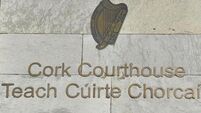Waxwings’ fatal attraction
The little flock of Scandinavians roosted each night on a rowan tree in the courtyard of an office building.
The site, virtually enclosed on all sides, sheltered from the breeze and inaccessible to the local cats, seemed an excellent place to roost. Juicy red berries, the waxwings’ favourite food, were abundant on the tree.
Appearances, however, can be deceptive; far from being safe, the location was lethal to the birds; they kept colliding with the windows of the building. I worked there at the time and, over a few days, found the bodies of seven dead waxwings. There must have been many more casualties.
That such resourceful birds should come to grief in this way is odd. They had flown here from beyond the Arctic Circle confronting myriad hazards in doing so.
They must have encountered many buildings in their time, so why were the windows of this particular one such a problem?
I thought long and hard about the waxwing massacre, but could never really understand why it happened.
Last week, however, I came across a handbook for architects published on line by the American Bird Conservancy. According to the anonymous author of Bird Friendly Building Design, collisions with buildings are a much bigger problem than is generally believed. Motor vehicles and cats are usually seen as the major threats to small birds, but the Conservancy claims that collisions are the biggest cause of sudden death. It estimates that between a hundred and a thousand million birds are killed by crashing into windows every year in the United States.
Each private house, it says, claims between one and 10 victims annually. Predators generally take weaker individuals, a ‘survival of the fittest’ effect ensuring that only stronger birds survive to breed, strengthening the population. Collision deaths, however, affect even the healthiest individuals.
Glass windows were invented by the Romans during the 1st Century AD but London’s Crystal Palace, built in 1851, was the first building in which glass was used as a structural element. Since the 1950s its use in large public buildings has increased dramatically. Private dwellings nowadays have increasingly larger windows and city office blocks are mostly glass and steel structures.
Windows are invisible both to birds and people. We humans detect the presence of glass from the architectural context and visual clues. We can anticipate, for example, where a glass door is likely to be. Even so, most of us, at least occasionally, walk into one. A bird, however, has no such intuition. It usually encounters glass for the first time when it collides with a window.
But glass is not the only culprit. The other key factor is light, both artificial and reflected. In poor visibility, birds are attracted to light. Indeed, this propensity led to one of the seminal works of Irish ornithology; RM Barrington’s The Migration of Birds as Observed at Irish Lighthouses and Lightships’ published in 1900.
It’s easy to see why artificial lighting indoors might lure a bird to a window. This may have been the culprit in the St. Stephen’s Green case, as the building continued to be lit well after dark.
However, reflected light is more likely to have been the cause. A waxwing flying from the tree would have to climb steeply to clear the high building. Looking upwards, it would see reflections of the sky in windows all around. These would resemble alternative passageways out of the courtyard, less arduous escape routes, inducing the hapless bird to fly into a window.
The handbook offers advice to architects on how to minimise collision risks at the design stage. Where existing buildings are concerned, it offers some useful tips. Interior lighting, it recommends, should be turned off at night or the windows shielded by blinds. Outdoor lamps should be covered so that the light is directed downwards and less visible to passing birds. Most importantly, transparent passages through a building, enabling patches of sky to be seen, should be obstructed.













